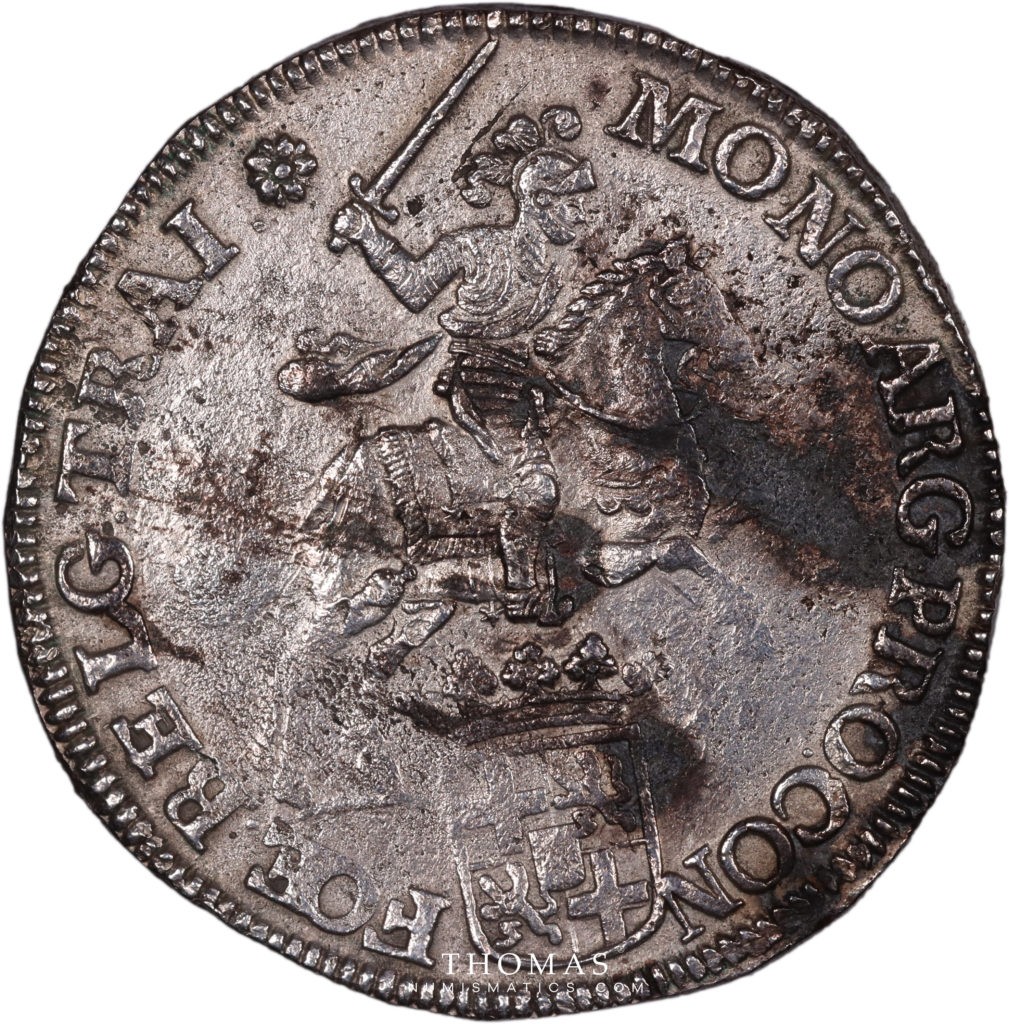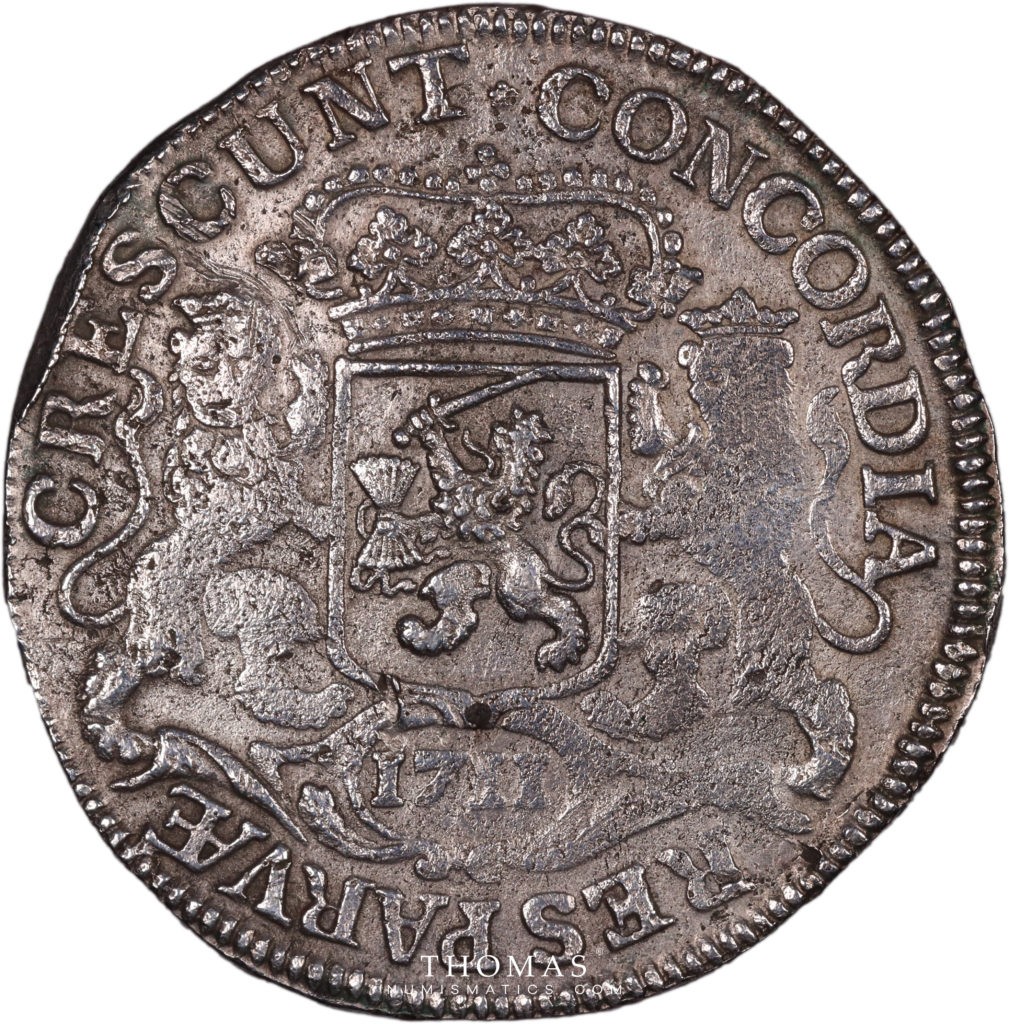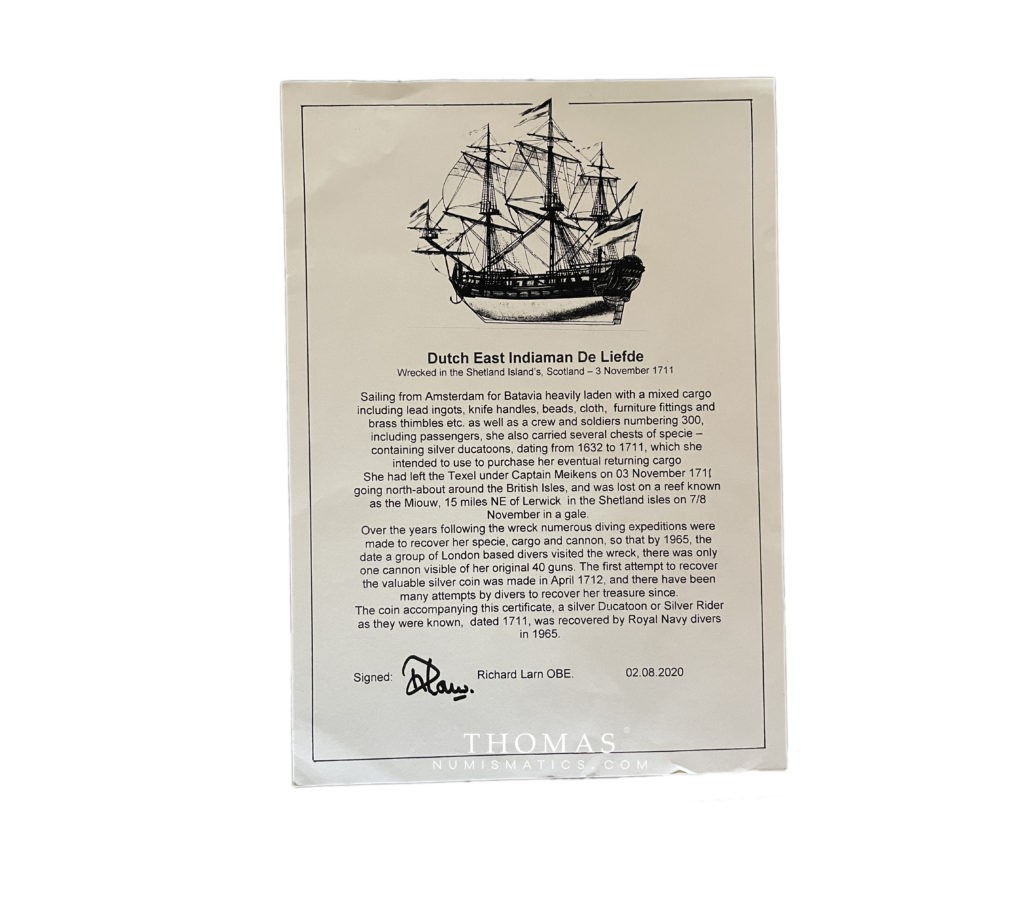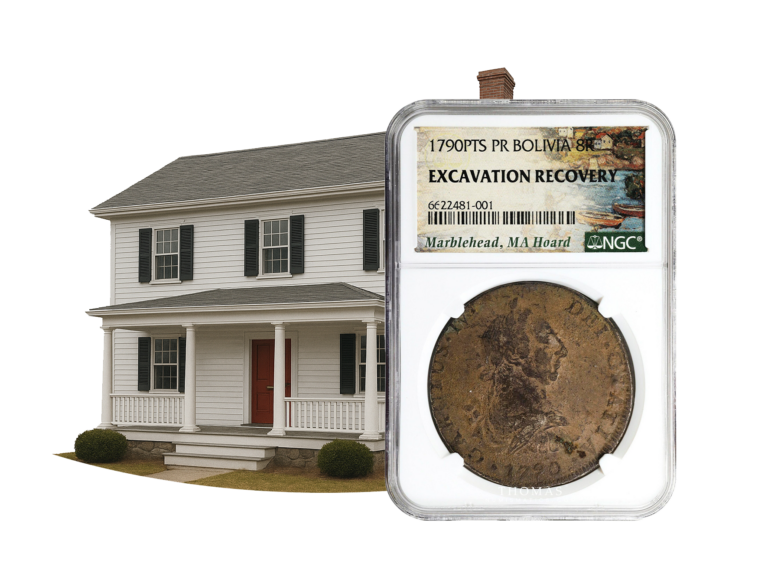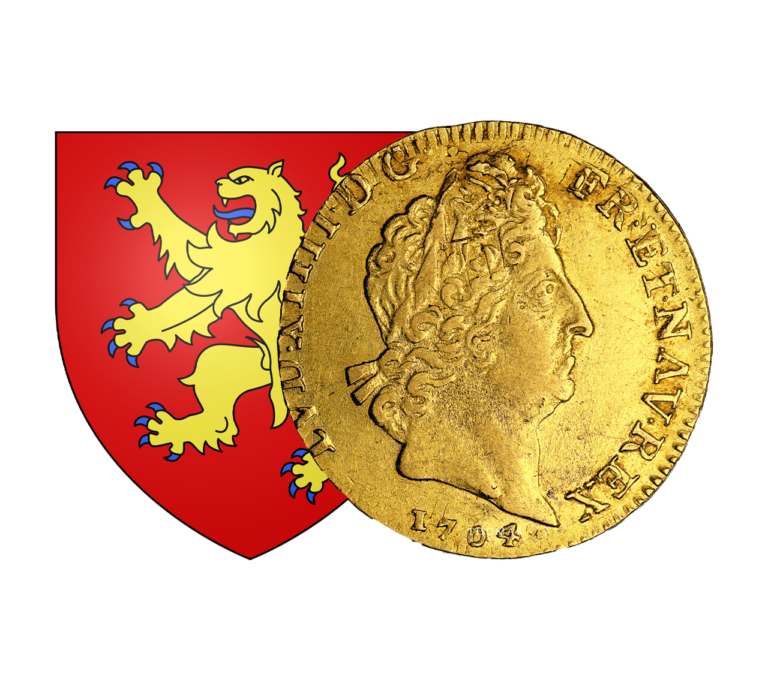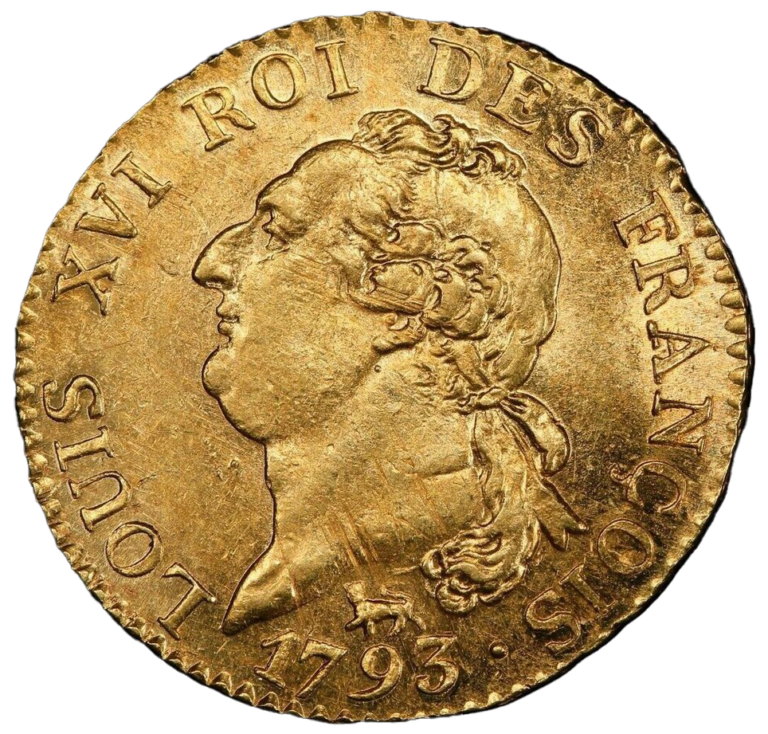
Discover all the news and articles from TNUMIS Magazine exclusively
The sinking of the ship De Liefde
The Dutch East India Company (in old Dutch: Vereenigde Oostindische Compagnie or VOC) owned three ships named De Liefde (The Love). The first two had already been lost in the oceans, in Japan in 1600 and in Baios de Padua in 1668. The third merchant ship De Liefde was built in 1698, in Amsterdam. The ship was 50 meters long and 13 meters wide, and weighed about 2 tons. On its fourth voyage to Batavia, it was wrecked after hitting a reef at Moi Ness on November 3, 1711, right at the beginning of its journey.
The sinking of the De Liefde
DeLiefde left Amsterdam at the end of October 1711, under the command of Captain Barent Muijkens, with a crew of 300 people, including a hundred soldiers. It passed through Texel, where it took on most of its heavy cargo. It was armed with 32 cannons and carried gold and silver coins worth an estimated 227,000 florins. One may speak of 1,800 gold and silver ducats.
On November 3, the Dutch merchant ship sailed with other ships to form a convoy up the North Sea. This route was longer, but easier to take than the English Channel, due to the winter winds and the presence of numerous enemies. In 1711, the War of the Spanish Succession was raging, and the Dutch ships were systematically stopped in the Channel by French privateers. The Dutch convoy had to get around this blockade. It avoided the pirates, but not the bad weather and it faced a violent storm. At least seven ships were swallowed by the sea that day.
The circumstances of the sinking of the De Liefde remain unclear. Of the 300 passengers, only one survived. That sole survivor was the watchman stationed at the bow who, when the ship struck land, was reportedly thrown onto the cliffs. This man, whose name is no longer known, stayed with a local family for about a year before being brought home.
News of the disaster reached the VOC’s Court of Administration via a dispatch from Lerwick. The Amsterdam Chamber reported: “From letters received from Laarwijk (Lerwick) to Hitland (Shetland) on the 17th and 29th of December last, we learnt that the ships of the Company which left Texel on the 3rd of November encountered a violent storm off Hitland, as a result of which one of them, De Liefde, was shipwrecked while sailing on a reef called Mioni (Mio Ness).
In search of the De Liefde treasure
A Scottish archaeological site
A first attempt was made to quickly recover the cargo. The VOC sent two small rescue boats, the Arent and the Otter, but they met with limited success.
Although local rumours claim that much of the treasure was recovered by the islanders after the sinking of the De Liefde. For nearly 300 years, there have been numerous attempts to save the treasure.
The archaeological site is located off the outer Skerries Islands, in this North Sea archipelago of eastern Shetland (which belongs to Scotland). Two sites are currently selected for the wreck of the De Liefde. The so-called coastal site, known since 1964, and a second location discovered in 1973, in deeper waters, whose exact location has never been determined.
Many explorations
In the 2000s, Wessex Archaeology was commissioned by Historic Scotland to study the wreck of the De Liefde. The scientific exploration took place in August 2005, but strong winds prevented the dives from being completed. However, this mission allowed us to look back on 300 years of research and exploration to discover the treasure of the wreck of the De Liefde.
Here are some key dates:
- At the beginning of the 18th century, Jacob Rowe of London, followed by Captain William Irvine, conducted diving operations on the De Liefde site under contract with the VOC. They used the first diving engines. It is not known exactly what was found during this first period.
- At the beginning of the 19th century, storms brought coins to the rocks of Mio Ness, recovered by the locals. These phenomena never really remove the presence of the treasure of De Liefde.
- In 1964, the De Liefde was rediscovered off the British Isles. The wreck turned out to be scattered. During the summer, Royal Naval divers from H.M.S. Shoulton located a cast-iron cannon on the site and an unknown quantity of silver ducatons.
- In 1965, brothers John and Peter Bannon organized a salvage expedition to the coastal site. The dive lasted four days and approximately 70 pieces were recovered. Plans were then made to conduct a more extensive recovery operation the following year. A large-scale excavation was conducted. The operations are directed by the lieutenant Alan Bax. He and a small team of divers discovered silver coins under the rocks no less than 50 feet below the surface. Most of the coins were silver ducatons minted in the Netherlands in the early 1700s and earlier. Four gold coins from the same period were also recovered.
- In 1967, the Bannon brothers formed a limited company registered under the name Scientific Survey and Location Ltd (SSL). They obtained the agreement of the Dutch government to recover a percentage of the items found at the De Liefde coastal site. They discovered artifacts and an intact chest filled with silver coins. They recovered a total of 4,320 silver coins and a few gold ducats.
- In 1969, an auction of 332 lots of coins (ducats, ducatons and half ducatons) was conducted by Glendining and Co. London.
- In 1973, members of the Aston University dive team, working on the 1971 wreck of another VOC ship, the Kennemerland, discovered another wreck. They stumbled upon another wreck that they believed to be part of the Liefde wreck, in deeper water off the coastal site. There is talk of a second offshore site.
- Between 1974 and 1976, Richard Price and Keith Muckleroy dived on the coastal site of the De Liefde. They recovered a few artifacts, but 1600 silver coins, mainly ducatons from the United Provinces and the Spanish Netherlands and 12 gold coins. The SSL took legal action against them to retain exclusive rights to the De Liefde site. The judgement was pronounced in 1981 and authorized Richard Price to explore the seabed. He never stopped his rescue operations.
All these explorations and researches contributed to learning more about the history of the De Liefde and to reveal a treasure of exceptional Dutch coins to the numismatic world.
